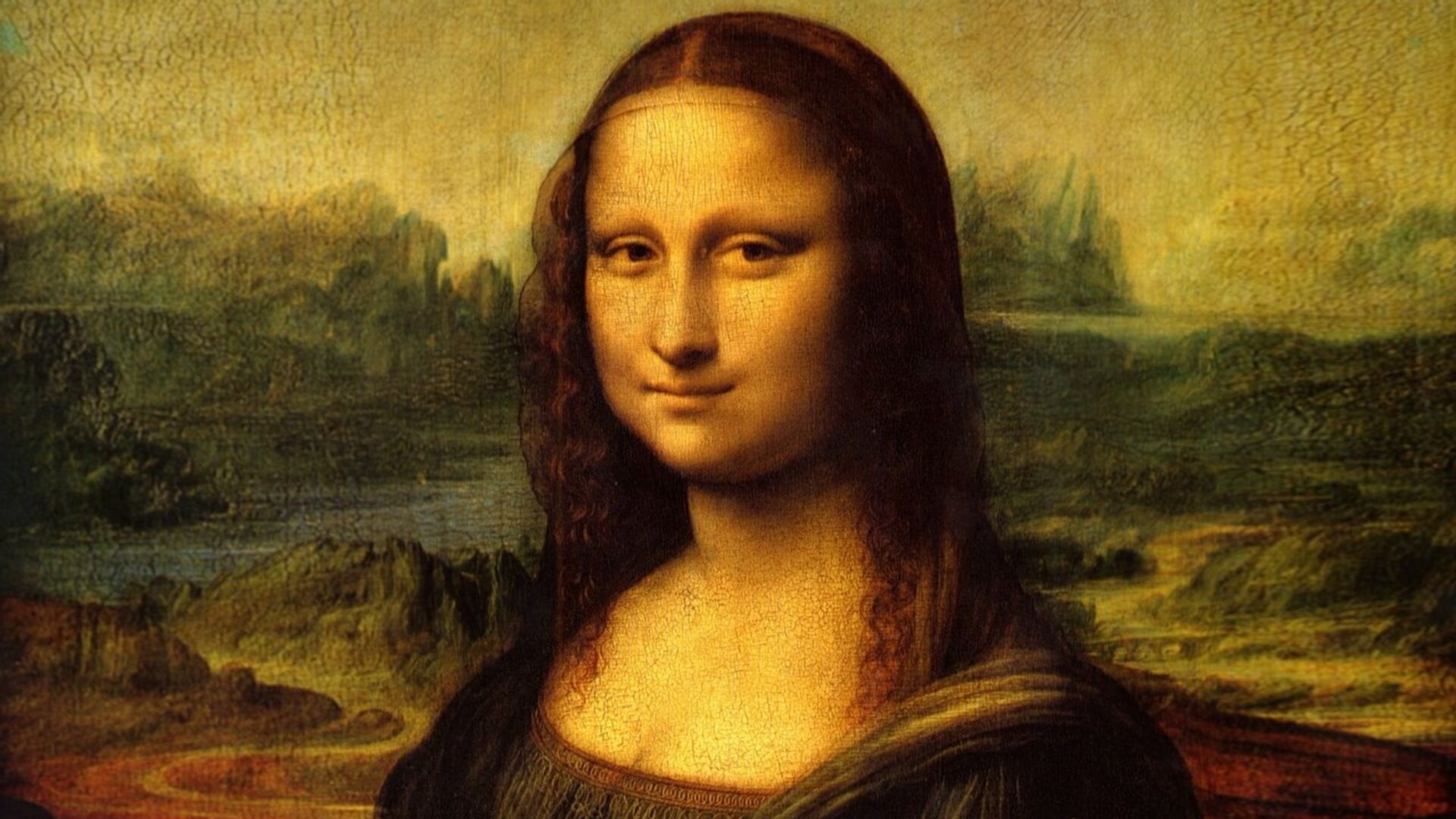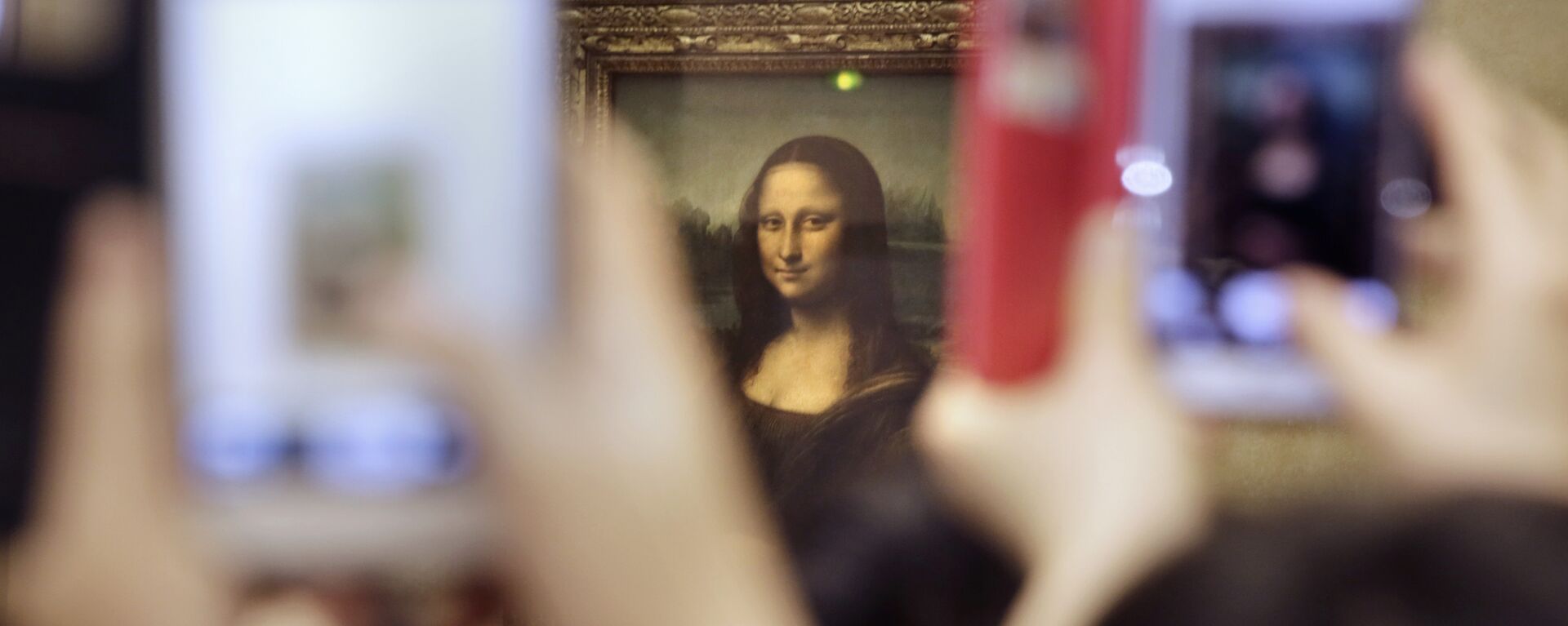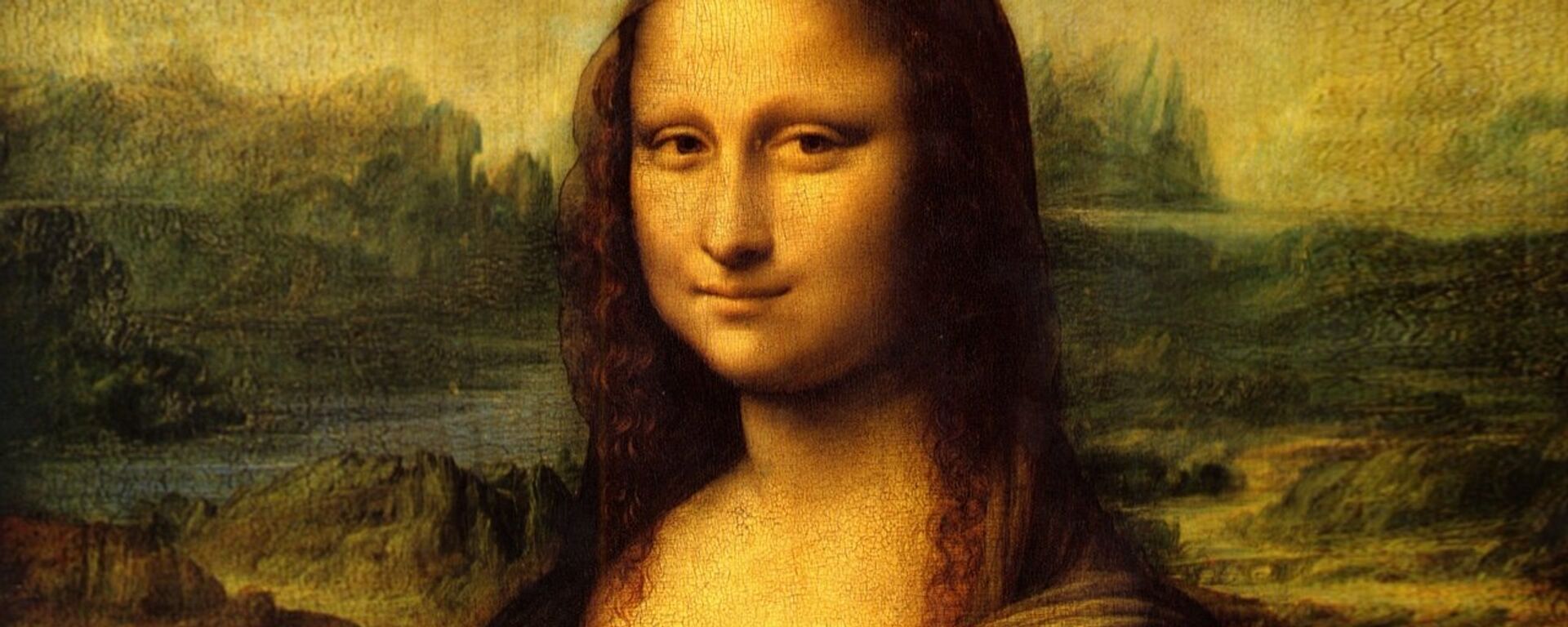https://sputnikglobe.com/20230504/mona-lisa-mystery-bridge-solved-by-italian-historian-1110088880.html
Mona Lisa Mystery Bridge 'Solved' by Italian Historian
Mona Lisa Mystery Bridge 'Solved' by Italian Historian
Sputnik International
The Romito di Laterina bridge in the Italian province of Arezzo, Tuscany, is the one that Leonardo da Vinci painted behind the smiling Mona Lisa, according to Italian historian Silvano Vinceti.
2023-05-04T13:06+0000
2023-05-04T13:06+0000
2023-05-04T13:06+0000
beyond politics
leonardo da vinci
mona lisa
tuscany
louvre
https://cdn1.img.sputnikglobe.com/img/17887/49/178874923_0:40:1280:760_1920x0_80_0_0_1c0532acd367e1fd36b68b342c10e243.jpg
The Romito di Laterina bridge in the Italian province of Arezzo, Tuscany, is the one that Leonardo da Vinci painted behind the enigmatic Mona Lisa, according to Italian historian Silvano Vinceti.Vinceti is cited as telling reporters in Rome that he came to the conclusion after carrying out painstaking analysis, juggling historical manuscripts and recent drone images. As he compared the painting and photographs of the area in question, Vinceti saw that the one surviving arch of the Romito bridge, if used to model four arches of the same size, fitted perfectly across the Arno River.Previous theories have suggested the bridge in the iconic artwork hanging behind bulletproof glass in the Louvre in Paris could be the Ponte Buriano, or Piacenza's Ponte Bobbio in the north of Italy. However, the latter has more than six arches, while Ponte Buriano has six. In 1503, when Leonardo da Vinci first started working on the portrait believed to be of Lisa Gherardini (the wife of a wealthy merchant, Francesco del Giocondo) the man of many talents had already been employed in the Arno Valley area as an engineer. Vinceti is convinced that Leonardo da Vinci must have opted to cross this particular bridge when riding horseback between the cities of Arezzo, Fiesole, and Florence.Furthermore, clay bluffs visible in the upper left part of the masterpiece of the Italian Renaissance are also from the upper Arno Valley, according to Silvano Vinceti.Incidentally, art historian Silvano Vinceti is quite notorious for making all sorts of "revelations" pertaining to Leonardo da Vinci's never finished artwork.Back in 2011, Vinceti claimed that the main "influence and model" for the painting was a male apprentice of the painter - Gian Giacomo Caprotti - an architect, engineer, and inventor, also known as 'Salai.' The apprentice, believed to have joined Leonardo da Vinci’s workshop in 1490 and painted with him over two decades, is deemed by many historians to have been in an intimate relationship with da Vinci.Vinceti also believed that as Leonardo da Vinci worked intermittently on the painting for many years, he might have been subjected to different sources of inspiration. According to the historian, the canvas abounds in concealed symbolic meanings. Among some of the many theories that have circulated over the decades, some have argued that the Mona Lisa was a self-portrait in disguise.
https://sputnikglobe.com/20190607/mona-lisas-smile-explained-1075717201.html
https://sputnikglobe.com/20170313/mona-lisa-smile-happy-analysis-1051545580.html
tuscany
Sputnik International
feedback@sputniknews.com
+74956456601
MIA „Rossiya Segodnya“
2023
News
en_EN
Sputnik International
feedback@sputniknews.com
+74956456601
MIA „Rossiya Segodnya“
Sputnik International
feedback@sputniknews.com
+74956456601
MIA „Rossiya Segodnya“
romito di laterina bridge, italian province of arezzo, tuscany, leonardo da vinci, enigmatic mona lisa, italian historian silvano vinceti, analysis of drone images, one surviving arch, clay bluffs, arno valley, arno river
romito di laterina bridge, italian province of arezzo, tuscany, leonardo da vinci, enigmatic mona lisa, italian historian silvano vinceti, analysis of drone images, one surviving arch, clay bluffs, arno valley, arno river
Mona Lisa Mystery Bridge 'Solved' by Italian Historian
The Mona Lisa, Leonardo da Vinci's world-renowned masterpiece depicting a Florentine noblewoman smiling enigmatically, has been the subject of speculation for decades. Wild theories have circulated as to who the woman serving as the model for the iconic portrait actually was, and, indeed, whether that person was a woman at all.
The
Romito di Laterina bridge in the Italian province of Arezzo, Tuscany, is the one that Leonardo da Vinci painted behind
the enigmatic Mona Lisa, according to Italian historian Silvano Vinceti.
Vinceti is cited as telling reporters in Rome that he came to the conclusion after carrying out painstaking analysis, juggling historical manuscripts and recent drone images. As he compared the painting and photographs of the area in question, Vinceti saw that the one surviving arch of the Romito bridge, if used to model four arches of the same size, fitted perfectly across the Arno River.
“It’s a Roman bridge, called Romito in the municipality of Laterina in the province of Arezzo. Only one arch remains of the bridge, but between 1501 and 1503 the bridge was very busy, as shown by a document on the state of assets on Medici family properties, found in the State archives of Florence"... The distinctive form of the Arno along that stretch of territory corresponds to what Leonardo portrayed in the landscape to the left of the noblewoman depicted in the famous painting,” he said.
Previous theories have suggested the bridge in the iconic artwork hanging behind bulletproof glass in the Louvre in Paris could be the Ponte Buriano, or Piacenza's Ponte Bobbio in the north of Italy. However, the latter has more than six arches, while Ponte Buriano has six.
In 1503, when Leonardo da Vinci first started working on the portrait
believed to be of Lisa Gherardini (the wife of a wealthy merchant, Francesco del Giocondo) the man of many talents had already been employed in the Arno Valley area as an engineer. Vinceti is convinced that Leonardo da Vinci must have opted to cross this particular bridge when riding horseback between the cities of Arezzo, Fiesole, and Florence.
"Wherever Leonardo went, he carried out realistic drawings. In the Mona Lisa landscape, there are numerous details from the real world," Vincenti said.
Furthermore, clay bluffs visible in the upper left part of the masterpiece of the Italian Renaissance are also from the upper Arno Valley, according to Silvano Vinceti.
"You can see those bluffs in the Codex Madrid II and in the landscape of the Virgin of the Rocks. The Royal Collection in London has various drawings from that area," the author of five books about Leonardo da Vinci stated.
Incidentally, art historian Silvano Vinceti is quite notorious for making all sorts of "revelations" pertaining to Leonardo da Vinci's never finished artwork.
Back in 2011, Vinceti claimed that the main "influence and model" for the painting was a male apprentice of the painter - Gian Giacomo Caprotti - an architect, engineer, and inventor, also known as 'Salai.' The apprentice, believed to have joined Leonardo da Vinci’s workshop in 1490 and painted with him over two decades, is deemed by many historians to have been in an intimate relationship with da Vinci.
Vinceti also believed that as Leonardo da Vinci worked intermittently on the painting for many years, he might have been subjected to different sources of inspiration. According to the historian, the canvas abounds in concealed symbolic meanings. Among some of the many theories that have circulated over the decades, some have argued that the Mona Lisa was a self-portrait in disguise.




